How to use RevPAR to Maximize Your Property’s Revenue
While your occupancy and/or your average daily rate (ADR) both give you good insights into your property’s financial performance, they aren’t sufficient to give you a holistic view. Even when used together and compared against your comp set.
That’s where RevPAR, or revenue per available room, comes in. It gives you an average of how much money is being earned per room.
Here is a quick explanation of what RevPAR is and why it is such an important performance metric for hotels of all types and sizes in maximizing revenue.
What is RevPAR?
Revenue per available room (RevPAR), measures the average earned monetary value of each available room in your hotel, making it easier to assess your property’s revenue management strategies and their performance, especially compared to your comp set. RevPAR gives hotel owners and managers deeper insight into both room revenue and occupancy rate performance.
RevPAR vs. Occupancy & ADR
RevPAR helps you compare your performance to hotels within your comp set more accurately and takes into consideration two key factors: total revenue and total occupancy.
If you were to do the same comparison using only ADR and occupancy, you might come to different conclusions about your ability to be competitive and the strategies that you use to maximize revenue opportunities.
Because RevPAR looks at average revenue per available room, it provides a clearer comparison for hotels that are looking to better understand their market placement and identify opportunities for additional revenue.
How To Calculate RevPAR
You can calculate RevPAR over any specific period, including daily, weekly, monthly, annually, etc.
RevPAR can be calculated in two ways: by dividing the total room revenue by the number of available rooms during a specific period, or by multiplying the average daily rate (ADR) by the occupancy rate during a specific period. Both formulas will yield the same numerical result, but they offer hoteliers different information; as such, hoteliers often use both calculations to get a more holistic view of their performance.
Calculation 1:
RevPAR = Total Room Revenue/ Number of Available Rooms
This formula gives you a straightforward average revenue generated per available room, whether occupied or not — in short, a quick snapshot of your performance over a specified period.
Calculation 2:
RevPAR = Average Daily Rate (ADR) × Occupancy Rate
This formula enables a deeper dive into how much the occupancy and average daily rates contribute to overall room revenue. It is especially effective for hotels that offer different room rates for different room types, as it shows how the mix of room sales at various rates contributes to the overall revenue. By understanding RevPAR by room type, a hotel can more effectively update its strategies to improve the performance of each room type.
Let’s look at an example…
Imagine that you have a 200-room hotel, and last night you made $25,500 USD, with an ADR of $150 USD and 85% occupancy. The RevPAR calculations would look like this:
Calculation 1 (Total room revenue / Total available rooms): $25,500 / 200 = $127.50
Calculation 2 (ADR x Occupancy): $150 x 85% = $127.50
Note: Regardless of the formula you use, your RevPAR will always be lower than your ADR because, generally, your hotel should never have an occupancy rate of over 100%, or you risk overbooking. In addition, the calculation for RevPAR considers all rooms available for sale, including those that have not been sold, while ADR only considers the rooms that have been sold.
The RevPAR Index
The RevPAR Index, also known as the Revenue Generating Index (RGI), enables you to compare your RevPAR to the RevPAR of your comp set (or another aggregated mix of hotels by market or submarket). It is an important benchmarking tool to ensure that your property is performing competitively compared to your comp set, and very useful in establishing whether your revenue management strategies are bringing in the most possible bookings and maximizing revenue opportunities.
To calculate your RGI, divide your RevPAR by the aggregated group’s RevPAR and multiply the result by 100.
If your hotel has an RGI of 100, you are getting the expected amount of RevPAR compared to the market.
Hotels typically want an RGI greater than 100, as it shows that the property has earned more than its expected market share.
If your property’s RGI is below 100, you should update your marketing and revenue management strategies to better position your property in comparison to your comp set.
How to Forecast RevPAR for Your Hotel
Pre-COVID, historical data was the easiest and most effective way for hoteliers to forecast pricing for their properties. However, historical data is no longer the most effective means of forecasting post-COVID, because the data is unreliable after the 2+ years of changing sales patterns, shifting demand across different global regions, and changes in consumer purchasing behavior during COVID.
While historical data can still provide some insights, it is important to use it in conjunction with real-time, forward-looking data and market intelligence to make more accurate predictions in the post-COVID landscape.
Today, hoteliers can improve their accuracy in forecasting by:
- Using Short-Term, Forward-Looking Data: Focus on more recent data and future demand trends that better reflect the current state of the market.
- Segmentation: Look at specific market segments that may have recovered differently or are showing signs of growth.
- Dynamic Pricing is a MUST: Implementing dynamic pricing using an automated pricing solution is an operational imperative, post-COVID, as it is the only way to ensure that your pricing can adapt to changes in the market in real time.
- Guest Segmentation: Not all guest types are the same and the price that each will bear is different, so you should be segmenting your RevPAR analysis by guest profile to better understand room demand by business travel, transient and group reservations. During our analysis of the Manhattan hotel landscape, we were able to predict a 6.7% increase in RevPAR for Q1 2024 over the prior year, partially because of an expected increase in group business.
- Use AI-Based Technology to Support Your Data Analysis: AI tools (like LodgIQ Commercial Strategy Platform) can help you more effectively analyze your property data by room type, property, time frame, and guest profile, and will provide you with personalized recommendations on actions that you can take, in real-time, to boost bookings and revenue, no matter how the market changes.
Maximize Your Hotel’s Profit with Better Insights
Tracking and monitoring key performance metrics, like RevPAR, will help your property identify new and different opportunities for revenue growth, and establish a deeper market penetration (compared to your comp set).
But that’s just the first step in maximizing your property’s profitability over the long term…
Managing revenue is important, but it’s just one piece of the larger picture of your property’s profitability. While many hoteliers prioritize overall occupancy, ADR, and RevPAR as key performance metrics, it’s also important to consider more granular metrics (i.e., customer segmentation mix, business mix, cost of acquisition, performance of direct/indirect sales channels, inventory allocation, etc.) to properly evaluate the successes of a property’s commercial strategies and identify additional revenue opportunities.
The best way to get a holistic view of your hotel’s performance metrics and business performance is to pull all your information into LodgIQ’s Commercial Strategy Platform, which consolidates and analyzes siloed property data and provides AI-based recommendations on strategic, proactive actions for a hotel’s three revenue-generating departments: Revenue Management, Sales, and Marketing.
Unsiloing your property’s data is integral to its success. It ensures that your commercial departments can work collaboratively towards a unified operational goal, using the same correlated data, enabling better and quicker data-based decision-making.
To find out more about how LodgIQ’s Commercial Strategy Platform can maximize your property’s bookings, RevPAR and overall profitability, contact us at EMAIL or PHONE, or book a meeting with one of our revenue generation experts.





